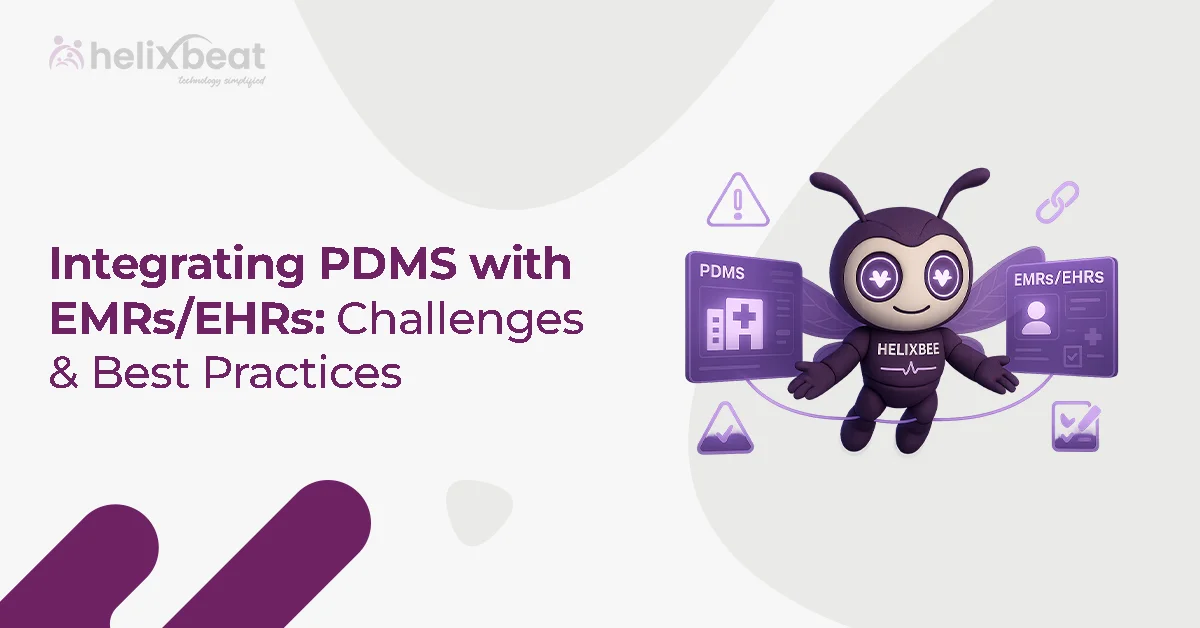How does developer experience (DX) affect healthcare interoperability? Effective communication and data exchange are essential for healthcare systems. Developer experience is crucial for seamless integration, resulting in enhanced interoperability and improved patient care. According to HealthIT.gov, organizations that use electronic health record (EHR) systems experience a 25% decrease in administrative costs and a 15% reduction in medical errors.
This blog emphasizes the significance of DX in achieving seamless interoperability in healthcare.

Table of Contents
Understanding Developer Experience in Healthcare
Developer experience in healthcare refers to the ease and efficiency with which developers can work with and integrate healthcare technology platforms. When the developer experience is positive, developers can create more reliable, robust, and efficient solutions, ultimately leading to better outcomes for healthcare providers and their patients.
Here’s why seamless developer experience (DX) matters:
- Simplifying Workflows
- A well-designed DX streamlines the development process, enabling healthcare tech teams to work more efficiently.
- With intuitive tools, clear documentation, and seamless integrations, developers can quickly build and implement systems that support healthcare professionals.
- This faster time-to-market means that solutions reach healthcare providers and patients more quickly, allowing for better care delivery.
- Reduced Errors
- When developer experience is optimized, the likelihood of errors decreases significantly.
- Smooth experience makes it easier for developers to understand the intricacies of healthcare systems, ensuring that the solutions they create are accurate, reliable, and effective.
- This lowers the risk of errors in handling patient data or clinical decision-making, which is crucial in a high-stakes environment like healthcare.
A positive DX is required in the domain of healthcare interoperability tools, for merging diverse platforms, such as EHRs (Electronic Health Records) and EMRs (Electronic Medical Records), as well as other health information systems.
These systems must work together seamlessly for healthcare providers to have a comprehensive and accurate view of patient information. Without a smooth developer experience, these tools can become difficult to implement, resulting in clunky, inefficient systems that lead to fragmented patient records, delayed diagnoses, and, ultimately, poor patient care.
Importance of Seamless Integration for EHRs
Here’s a deeper look into why seamless EHR integration is so crucial for healthcare systems:
1. Unified Patient Information
One of the primary benefits of seamless EHR integration is the ability to provide a unified, comprehensive view of a patient’s health data. This allows healthcare providers to:
- Regardless of the system used, all healthcare providers, including general practitioners, specialists, and emergency room doctors, can view duplicate patient records.
- With all relevant data in one place, healthcare professionals can make well-informed decisions, reducing the chances of missed conditions or conflicting treatment plans.
- The integration ensures that no part of the patient’s history or treatment plan is overlooked, leading to more personalized and effective care.
2. Improved Communication Across Healthcare Teams
The ability to exchange data smoothly between different healthcare systems enhances communication, which is essential for effective patient care. This results in:
- Clinicians, specialists, and other healthcare providers can share information quickly, thereby enhancing collaboration and reducing the likelihood of duplicated efforts.
- With seamless data exchange, patients receive a more streamlined experience as their medical records follow them throughout different points of care, making it easier for doctors to discuss treatment options.
- The real-time sharing of information ensures that any changes to a patient’s condition or treatment plan are immediately visible to everyone involved in their care.
3. Enhanced Quality of Care
When EHR systems are seamlessly integrated, it directly contributes to the quality-of-care patients receive:
- With instant access to up-to-date information, healthcare providers can make quicker, more accurate diagnoses, leading to faster treatment plans.
- Integrating EHR systems eliminates the need for manual data entry and minimizes the risk of human error, such as misinterpretations of patient data.
- With all necessary data in one place, healthcare teams can streamline their workflows, reduce unnecessary tests, and deliver more efficient treatment, ultimately leading to better patient outcomes.
Click to learn Why Healthcare Interoperability Matters in Healthcare
Benefits of Improved Developer Experience in Healthcare
A positive developer experience in healthcare yields numerous advantages that benefit both developers and end-users, including healthcare providers and patients.
- Faster Integration and Reduced Errors
- When developers can seamlessly interact with healthcare systems, the integration process becomes much quicker.
- This allows for faster deployment of important updates, ensuring that healthcare professionals can access the newest features and tools without unnecessary delays.
- A smoother developer experience in healthcare leads to fewer issues or bugs.
- By providing developers with user-friendly tools and clear guidelines, the likelihood of data integrity issues, crucial in healthcare, becomes significantly lower.
Get a Free Demo of Helixbeat’s Developer Tools
- Improved Communication Between Healthcare Systems
- When developers have access to intuitive tools and straightforward documentation, it improves the collaboration between teams working on various aspects of healthcare technology.
- This makes it easier to integrate different healthcare platforms and create cohesive solutions.
- With an enhanced developer experience in healthcare, the data flow between systems becomes smoother, facilitating easier communication among healthcare providers.
- This ensures that all healthcare professionals can access accurate, real-time information, leading to better decision-making.
How Helixbeat’s GENIUS API Platform Enhances DX
Here’s how GENIUS makes a practical effect:
- Easy Integration
- GENIUS allows developers to easily integrate EHR systems, making the exchange of patient data seamless and efficient.
- This simplifies the entire integration process, reducing the need for complex and time-consuming manual labor.
- The platform is designed with ease of integration in mind.
- With pre-built connectors and templates, developers can easily integrate with existing healthcare systems without the usual headaches associated with traditional integration.
- FHIR-Based
- GENIUS supports FHIR, which is a widely accepted standard for exchanging healthcare information.
- By leveraging FHIR, GENIUS ensures that healthcare data is transferred between different systems in a consistent and standardized format.
- The use of FHIR enables seamless integration across various healthcare systems, ensuring that data is accessible to healthcare providers regardless of the platform they are using.
- This helps bridge the gaps in data exchange between hospitals, clinics, and other healthcare facilities.
- Secure and Compliant
- HIPAA and GDPR Compliance: In healthcare, security is paramount.
- GENIUS is built to meet the highest security standards, including HIPAA and GDPR, ensuring that all sensitive patient data is handled securely and in compliance with regulations.
- Whether data is being transmitted between systems or stored, GENIUS employs state-of-the-art encryption and security protocols to safeguard patient privacy and meet global compliance standards.
Key Takeaways
Platforms like Helixbeat’s GENIUS enhance the developer’s experience in healthcare by facilitating this integration, helping developers reduce errors and improve the reliability of connected systems. With faster, more precise integration, healthcare providers can access up-to-date patient data, which directly improves the quality of care and overall patient outcomes.
Are you willing to simplify your healthcare integrations and improve your developer experience? Let’s make it happen.
FAQs
- Why does interoperability matter in healthcare information technology?
Interoperability ensures that healthcare systems can communicate effectively, leading to better patient care and more efficient healthcare operations.
- What is the primary purpose of healthcare data interoperability?
The primary purpose is to improve patient outcomes by enabling healthcare providers to access complete and up-to-date patient data.
- What are the challenges of interoperability in health information exchange?
Challenges include data silos, legacy systems, and complex regulatory compliance.
- Why is interoperability so important when using EHR?
Without interoperability, EHRs are isolated, and critical patient information may be inaccessible, leading to delays in care.














